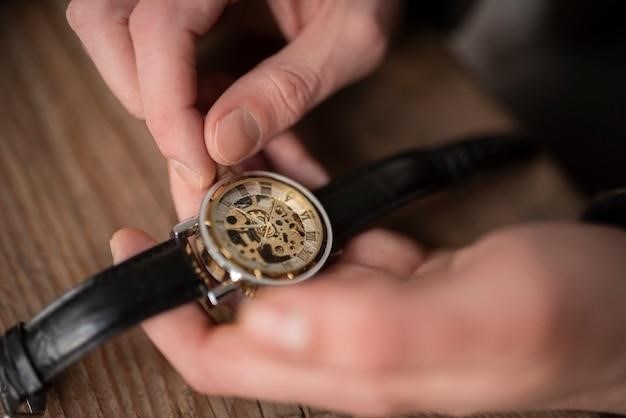efferdent denture cleaner instructions
Efferdent is a popular brand of denture cleaner that helps remove stains, plaque, and bacteria from dentures, retainers, and other dental appliances․ It comes in various forms, including tablets, powders, and liquids․ Efferdent is generally safe for use on most dental appliances, but it’s always a good idea to check the product label for specific instructions and warnings․
Overview
Efferdent is a widely used denture cleanser that helps maintain the hygiene and appearance of dentures, retainers, and other dental appliances․ It effectively removes stains, plaque, and bacteria, ensuring a clean and fresh mouth․ Efferdent comes in various forms, including tablets, powders, and liquids, offering different options to suit individual preferences․ The cleaning process typically involves soaking the appliance in an effervescent solution created by dissolving the Efferdent product in water․ This solution works by releasing oxygen bubbles that loosen and lift away debris․ The active ingredient in Efferdent is persulfate, which is a powerful cleaning agent․ However, it’s essential to note that persulfates can cause allergic reactions in some individuals․ The FDA has requested manufacturers to include warnings about this potential risk on product labels․ Efferdent is generally safe for use on most dental appliances, but it’s crucial to follow the instructions on the product label carefully․

Types of Efferdent Products
Efferdent offers a range of products designed to meet different cleaning needs․ Efferdent Complete Clean Anti-Bacterial Dental Appliance Cleanser Tablets provide a 5-in-1 system for cleaning full-plate dentures, partials, retainers, and other dental appliances․ They effectively remove stains, plaque, and bacteria, leaving your appliances fresh and clean․ Efferdent Plus Mint Anti-Bacterial Dental Appliance Cleanser Tablets deliver a powerful mint flavor, enhancing your cleaning experience with extra fresh breath․ They also provide a deep clean and effective stain removal․ Efferdent PM Overnight Dental Appliance Cleanser is specifically formulated for overnight cleaning․ It contains whitening activators that work while you sleep, brightening your dental appliances for a deeper clean․ The formula also helps prevent plaque buildup and food particles from accumulating․ Each Efferdent product is designed to provide a thorough clean and fresh breath, ensuring your dental appliances are in optimal condition․
Active Ingredient and Safety Concerns
The primary active ingredient in Efferdent is persulfate, a powerful cleaning agent that effectively removes stains, plaque, and bacteria from dentures and other dental appliances․ While generally safe for most individuals, persulfates can cause allergic reactions in some people․ The FDA has advised manufacturers of denture cleaners, including Efferdent, to update their product labeling to include warnings about the risk of allergic reactions․ These warnings are crucial for individuals with known sensitivities or allergies to persulfates․ It’s important to always read and understand the product label instructions before using Efferdent or any other denture cleaner․ If you experience any irritation, redness, or discomfort after using Efferdent, stop using it immediately and consult your dentist or doctor․
How Efferdent Works
Efferdent denture cleaners work through a process called effervescence, which involves the release of gas bubbles when the tablet or powder dissolves in water; These bubbles create a cleaning action that helps loosen and remove food particles, plaque, and bacteria from the surface of dentures and other dental appliances․ The persulfate in Efferdent acts as an oxidizing agent, breaking down stains and discoloration․ Additionally, the effervescence helps to create a micro-scrubbing action, further enhancing the cleaning process․ The cleaning action of Efferdent is further enhanced by the presence of other ingredients, such as flavorings, surfactants, and anti-bacterial agents․ These ingredients contribute to the overall cleaning effectiveness and leave a fresh, clean scent․
Instructions for Using Efferdent
Using Efferdent is a straightforward process that involves soaking your dental appliance in a solution of warm water and Efferdent tablets․ The specific instructions may vary slightly depending on the type of Efferdent product you are using, so always refer to the product label for detailed guidelines․ Generally, you will need to drop one Efferdent tablet into a container of warm water, ensuring there is enough water to fully submerge your dental appliance․ After placing your appliance in the solution, allow it to soak for the recommended time, which is typically 3-5 minutes․ The solution will change color as it cleans, indicating that the cleaning process is underway․ After the soaking time is complete, remove the appliance from the solution, rinse it thoroughly with cool water, and dry it completely before putting it back in your mouth․
Soaking Time
The recommended soaking time for Efferdent can vary depending on the type of product and the level of cleaning required․ For most Efferdent products, a soaking time of 3-5 minutes is sufficient for a thorough cleaning․ However, some products, like Efferdent PM Overnight, are designed for longer soaking times, often overnight․ For regular cleaning, a 3-5 minute soak is usually enough to remove food particles, plaque, and stains․ For a deeper clean or to remove stubborn stains, you may want to consider soaking your dental appliance for a longer period, up to 10 minutes․ Always refer to the product label for specific soaking time recommendations and avoid soaking your appliance for longer than the recommended time, as it could potentially damage the material․
Water Temperature
The water temperature used for soaking dentures in Efferdent is crucial for effective cleaning and to prevent damage to the appliance․ The recommended water temperature is generally very warm, but not hot․ Hot water can warp or damage dentures, especially those made of acrylic․ To ensure the right temperature, use warm water that is comfortable to the touch․ Avoid using excessively hot water, as it can potentially melt or distort the denture material․ Additionally, using cold water may not be as effective in dissolving the cleaning tablets and may not provide the same level of cleaning․ Always check the product label for specific water temperature recommendations․
Solution Color Change
One of the distinctive features of Efferdent denture cleaning tablets is the color change of the solution as it works․ This color change is a visual indicator of the cleaning process and helps ensure effective cleaning․ The solution typically starts as a clear or slightly blue color, and as the tablet dissolves and the cleaning action begins, it changes to a greenish hue․ This color change signifies that the cleaning agents in the tablet are effectively breaking down stains, plaque, and bacteria․ The duration of the color change can vary depending on the product and the level of cleaning needed․ However, it is a helpful visual cue to indicate that the denture cleaner is working effectively․
Rinsing and Drying
Once the soaking time is complete, it’s crucial to thoroughly rinse your dentures or dental appliance to remove any remaining cleaning solution․ This step is essential to ensure that no residue remains on the appliance, which could irritate your gums or affect the fit of the denture․ After rinsing, it’s important to gently dry your dentures or appliance with a soft cloth or paper towel․ Avoid using harsh materials or abrasive cloths, as they can scratch or damage the appliance․ Proper rinsing and drying not only help maintain the cleanliness of your dentures but also contribute to their longevity and prevent the growth of bacteria and mold․
Frequency of Use
The frequency with which you should use Efferdent denture cleaner depends on your individual needs and the level of care your dentures require․ For most users, a twice-weekly cleaning with Efferdent is sufficient to maintain a clean and fresh denture․ However, if you notice an increase in staining or plaque buildup, you may need to increase the frequency of cleaning․ Additionally, if you consume foods or beverages that tend to stain your dentures, more frequent cleaning may be necessary to maintain their appearance․ It’s important to note that excessive use of denture cleaner can lead to the deterioration of your dentures over time․ Always follow the manufacturer’s instructions and consult with your dentist if you have any concerns about the frequency of denture cleaning․
Alternative Uses for Efferdent
While primarily designed for denture cleaning, Efferdent’s effervescent properties and cleaning power extend to other household uses․ Efferdent tablets can be used to clean and deodorize various items around the house, including⁚
- Cleaning Jewelry⁚ Soak your silver or gold jewelry in a solution of Efferdent and warm water to remove tarnish and restore shine․
- Removing Stains from Toilet Bowls⁚ Drop a tablet into the toilet bowl and let it fizz for a few minutes before scrubbing with a toilet brush․
- Cleaning Showerheads⁚ Fill a plastic bag with a solution of Efferdent and warm water, then secure the bag over the showerhead․ Let it soak for a few hours to remove mineral deposits․
- Cleaning Baby Bottles and Pacifiers⁚ Efferdent can be used to clean and sanitize baby bottles and pacifiers, removing milk residue and bacteria; Rinse thoroughly before use․
Remember to always follow the manufacturer’s instructions for safe and effective use․
Storage and Disposal
Proper storage and disposal of Efferdent are essential for safety and environmental considerations․ Here’s how to handle Efferdent correctly⁚
- Storage⁚ Keep Efferdent tablets in their original container, tightly sealed to prevent moisture absorption․ Store in a cool, dry place, away from direct sunlight and heat․ Keep out of reach of children and pets․
- Disposal⁚ Do not flush Efferdent tablets down the toilet or drain․ Instead, wrap used tablets in paper and dispose of them in the trash․ Avoid contact with skin and eyes during disposal․ If Efferdent comes into contact with skin or eyes, rinse the affected area with plenty of water․ If irritation persists, seek medical attention․
- Environmental Impact⁚ Efferdent is generally considered safe for the environment when used and disposed of properly․ However, excessive use or improper disposal can contribute to water pollution․ It’s best to practice moderation and follow disposal guidelines to minimize environmental impact․
By following these storage and disposal guidelines, you can ensure the safe and responsible use of Efferdent․
Tips for Effective Cleaning
To ensure your dentures or dental appliances are thoroughly cleaned and free of bacteria and stains, follow these tips for effective cleaning with Efferdent⁚
- Pre-Cleaning⁚ Before using Efferdent, rinse your dentures or dental appliances with cool water to remove any loose food particles or debris․ This will help the Efferdent work more effectively․
- Water Temperature⁚ Use warm, not hot, water when soaking your dentures or appliances in Efferdent․ Hot water can damage the material of your dentures or appliances․
- Soaking Time⁚ Follow the instructions on the Efferdent packaging for the recommended soaking time․ Typically, it’s between 3-5 minutes, but some products may require longer soaking․
- Solution Color Change⁚ Observe the color change of the Efferdent solution as it cleans․ The solution will usually change color, indicating that the cleaning process is underway․
- Brush After Soaking⁚ After soaking your dentures or appliances in Efferdent, gently brush them with a soft-bristled toothbrush and denture cleaning paste or toothpaste․ This will help remove any remaining stains or debris․
By following these tips, you can maximize the effectiveness of Efferdent and maintain the cleanliness and hygiene of your dentures or appliances․
Common Questions
Here are some common questions about using Efferdent denture cleaner⁚
- How long do you leave denture cleaner tablets in? The soaking time for Efferdent tablets varies depending on the specific product․ Refer to the instructions on the packaging for the recommended soaking time․ Typically, it’s between 3-5 minutes for a quick clean or overnight for a deeper clean․
- How many times can you use Efferdent? Efferdent can be used as often as needed, but it is generally recommended to use it 2-3 times per week for routine cleaning․ If you have a lot of staining or debris, you may need to use it more frequently․
- How long do you let Efferdent sit? The soaking time for Efferdent tablets varies depending on the product․ Follow the instructions on the packaging for the recommended soaking time․ Some products may recommend a shorter soaking time for a quick clean, while others may recommend a longer soaking time for a deeper clean․
- Can you use Efferdent every day? It is safe to use Efferdent daily, but it is not necessary․ Using it 2-3 times per week is generally sufficient for routine cleaning․ However, if you have a lot of staining or debris, you may need to use it more frequently․
If you have any further questions or concerns about using Efferdent, consult your dentist or a dental professional․




